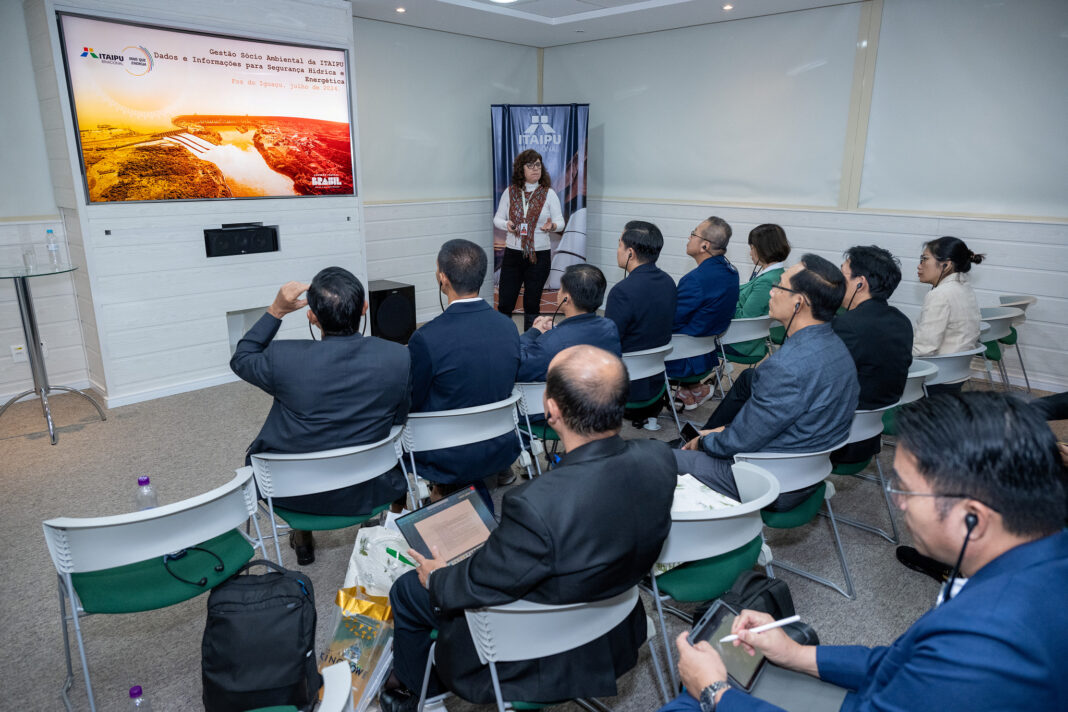By Anoulak Kittikhoun, Chief Executive Officer of the Mekong River Commission Secretariat
The Mighty Mekong River links 70 million people and six countries – China, Myanmar, Laos, Thailand, Cambodia, and Vietnam – in shared destiny. Anything each of us does affects the others – for better or worse. Yet, countries have and are continuing to develop national projects on the transboundary river – from hydropower and irrigation to flood control and navigation – affecting one another for better and worse. Understandably this is to meet their national interests and needs. But it is also putting the environment and people out of balance. Without enough information and consultation on some major national undertakings, misperception spreads, trust is eroded, and ill feelings and water tensions loom.
We must ask ourselves: how can we do better? What bold thinking and new steps must we take to ensure the Mekong remains productive, sustainable and peaceful? How can we build on the relatively robust cooperation treaty that is the Mekong Agreement and successful institutional framework of the Mekong River Commission of nearly 30 years, and uplift Mekong cooperation to the next level?
The answer lies in how we approach collaboration and then how we turn what may seem complicated and almost impossible undertaking possible.
Imagine a project where two nations, regardless of their size, come together as equals – investing jointly, sharing both the challenges and the rewards. A project where engineers, managers, and supervisors from different cultures and languages collaborate daily, united by a common purpose. A project that not only powers homes and industries but also safeguards the interests of downstream neighbors. And a project that prioritizes the well-being of impacted communities through royalties and perhaps the most comprehensive and long-term social and livelihood programs ever implemented by a dam.
This is Itaipu – a remarkable joint venture between Brazil and Paraguay. In the heart of South America, it stands as a model of the highest level of transboundary river cooperation and shared prosperity. Rising at 196 meters high and stretching 7,919 meters long, the project boasts an installed capacity of 14,000 Megawatts. It is the third-largest hydropower project in the world, providing 10% of the electricity consumed in Brazil and 90% in Paraguay, a country with a population size similar to Laos.
Yet the huge size and capacity of the project are not the most impressive part. Rather the joint investment and joint operation, right on the border no less, as well as the benefits received by the communities and guarantee for downstream Argentina that make it an inspiration for the visiting senior Mekong delegation consisting of the Mekong River Commission (MRC) Joint Committee members and Secretariat early this August.
As the Mekong countries look toward building more water infrastructure projects, whether in hydropower or other sectors, the Itaipu model offers invaluable insights into how joint investments can be realized, from negotiation on border issues, consulting with downstream countries, engaging and securing buy-in from communities, conducting proper feasibility studies and impact assessments, and putting in place joint management and operation. Stories like Itaipu’s, and those of other joint efforts in the Columbia River between Canada and the United States (US), or the Senegal river between Mali, Mauritania and Senegal, indeed, are ones of transforming potential conflicts into cooperation through equitable cost and benefit sharing.
Could the Mekong countries take a page out of these books and work together to achieve a similarly high level of cooperation?
In the face of climate risks and environmental stress, for the first time since the 1970s, the MRC is supporting our member countries with Proactive Regional Planning. In fact, Article 2 of the Mekong Agreement long calls for joint and basin-wide development projects between countries, which is recently highlighted in our Basin Development Strategy 2021-2030. The PRP is thus a renewed effort to identify several joint investment projects and national projects of basin-wide significance that will address water, food, energy, and environmental needs in an integrated manner. The insights gained from exemplary joint projects around the world will be particularly relevant if countries would want to properly pursue such planned hydropower projects as Pak Chom-Pa Mong and Ban Kum-Salavanh across the Mekong mainstream shared between Laos and Thailand. The scale of the challenges and concerns of potential adverse impacts these projects present are huge, but so are the opportunities that the right collaborative approach and joint investment done well can offer.
If pursued, these projects will require high-level governmental and national efforts on both Laos and Thailand, meticulous joint planning and negotiation to address shared concerns and benefits – not only for the countries directly involved but for downstream riparian nations, such as Cambodia and Vietnam. Cambodia and Vietnam themselves can also pursue joint work to ensure sustainable management of the shared Mekong Delta. The Mekong countries are luckier than most riparians sharing international rivers – we have a working cooperation treaty, water utilization procedures and technical guidelines, data, information and knowledge, friendly relations among neighbors based on the Mekong Spirit and ASEAN community, and supportive partners and friends from around the world.
With vision and leadership, there is no reason why an Itaipu type project cannot be realized in our shared basin. So, Mekong countries, if you’re going to embark on a project that impacts other nations and millions of people – do it right.



